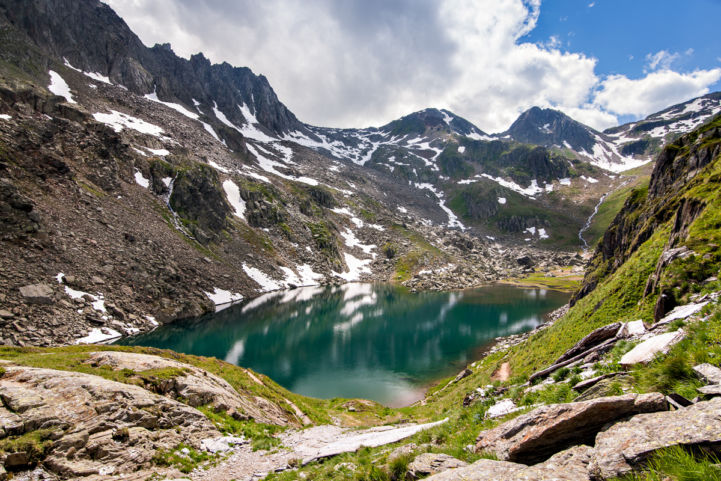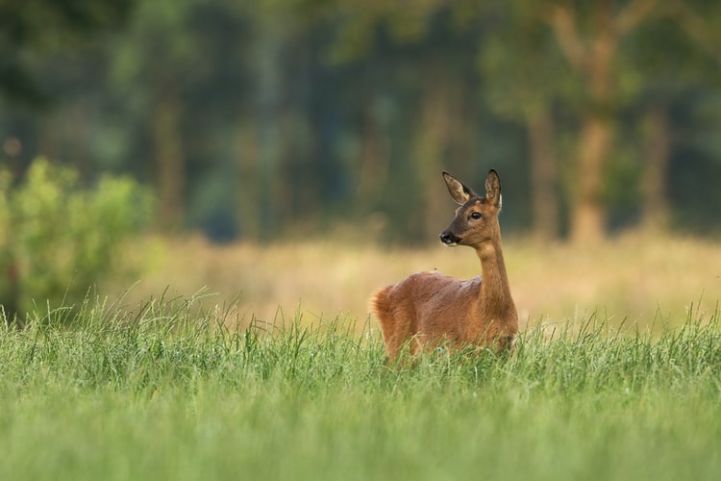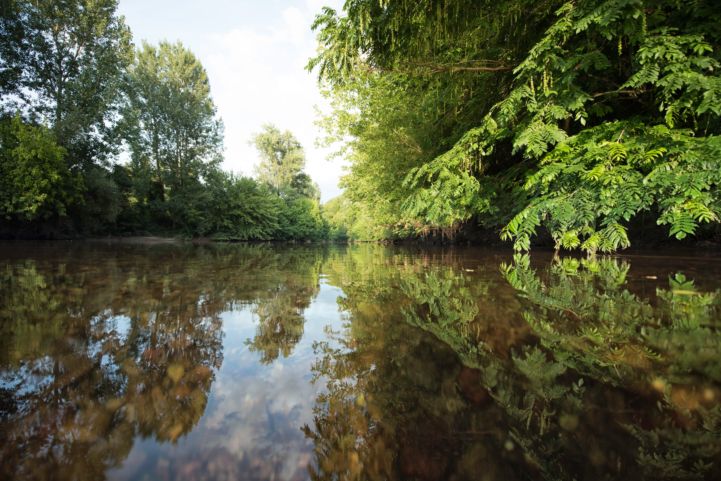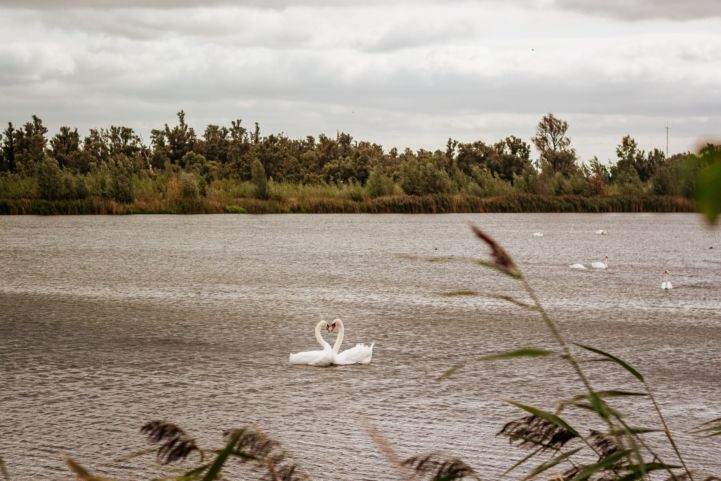Exploring nature on the banks of the Rhine
‘’Biodiversity starts in the distant past and it points toward the future’’ – Frans Lanting
Rhine river might be famous for the legendary Rheingold, but that is not the only treasure that this river holds. Tidal wetlands in the Netherlands, protected nature reserves in Germany and France and flawless Alpine Lake in Switzerland – these are just some examples of the natural beauty sites that host marvellous biodiverse ecosystems, waiting to be experienced on the EuroVelo 15 – Rhine Cycle Route.
Lake Toma – Pristine waters among the clouds
At the start of your cycling journey high in the majestic Swiss Alps, you are greeted by the wonderful sight of Lake Toma, which is considered to be the source of the River Rhine. From the Oberalp Pass a 90-minute hike on marked paths leads to the lake, which lies beneath the Piz Badus. In July, cuckoo flowers, gentian, alpine roses, marguerites, and white cotton grass grow whilst sweet-smelling martagon lilies bloom along the path and lakeshore with goats grazing on the surrounding slopes. The lake is listed as one of Switzerland's natural sights of national importance.

Ile de Rhinau Nature Reserve – ‘’European jungle’’
On the way to the north a marvellous sight emerges - Ile de Rhinau, a patchwork of forests, grasslands, and wetland environments. The diverse landscapes feature various biotopes, making the Nature Reserve home to a high number of rare plant and animal species. Flooded each season when the Rhine bursts its banks, Rhinau island offers a diverse and well-preserved natural habitat that is regenerated by the seasonal flooding of the river.
With 500 species of plants, dozens of different types of mushrooms, countless mosses and impressive creepers (clematis, ivy, etc.), the Rhine forest rightfully bears the title of “European jungle”. The Rhinau island and its neighbouring reserve Taubergiessen in Germany are famous for their focus on the protection of the birds that migrate there for winter. On average, 5,300 waterfowl spend January on the waterways around the island. Around 140 species of birds, 39 species of dragonflies, more than 85 species of wild bees and wasps, 26 species of fish, several amphibians, butterflies, and molluscs, as well as wild boar, roe deer, foxes, badgers, bats, etc. prove that the diverse life is out in full force on the island. This is explained by the fact that the area is a real patchwork of different environments, often closely connected to the water.

Sauer Delta Nature Reserve – Skies full of birds
Continuing your cycle travel along the Rhine, and crossing into France, you will make your way to the Sauer Delta Nature Reserve which protects a rich and diverse mosaic of Rhineland natural environments. The territory of 486 hectares including a meander of the former main course of the Rhine is subject to fluctuations in water levels. During the floods, the river spreads throughout the site while the mudflats appear at low tide with their own procession of feeding birds. The surrounding environments are predominantly composed of alluvial forests. There is also a large area of wet meadows, interspersed with depressions and reed beds. The ornithological richness of the site has made its reputation. The avifauna has 183 species, 77 of which are nesting, including Bluethroat, Penduline Tit, Great Reed Warbler and, of course, the Black Kite, which finds its most important nesting area in Alsace.

Kühkopf-Knoblochsaue nature reserve in Riedstadt - Enchanting forests and black kite
Leaving behind France, and continuing your journey north, you will come across the Kühkopf-Knoblochsaue a Naturschutzgebiet (nature reserve), located in the Groß-Gerau district, Germany. It is the largest nature reserve in Hesse, part of the Hessian Ried between the river Rhine and the Hessische Bergstraße. The protected area contains riparian forests (Auwald or Aue), both Weichholzaue with typical Kopfweide and black poplar, and bottomland hardwood forest with oak, elm and aspen.
The Kühkopf area has a proud tradition of orchards, with plums, walnuts, a variety of apples and other fruit trees. The extended swamps of the floodplains, with grass, reed beds and trees, offer breeding places for many kinds of birds, as well as resting places for migrating birds. The symbol of the Kühkopf is the black kite. Deer, wild boars, foxes, frogs, and toads are common in the protected area. In spring, much of the forest floor is covered by wild garlic and many trees host mistletoes.

Biesbosch National Park – Beautiful labyrinth of rivers and creeks
As you near the end of your journey in the Netherlands, a site to be visited should be Biesbosch National Park – one of the largest national parks in the country and one of the last extensive areas of freshwater tidal wetlands in North-western Europe. The Biesbosch ('forest of sedges' or 'rushwoods') is comprised of a vast network of rivers and smaller creeks with islands. The vegetation is mostly willow forests, although wet grasslands and fields of reeds are common as well. The Biesbosch is an important wetland area for waterfowl and is rich in flora and fauna. It is especially important for migrating geese. It’s a wonderful place to walk, cycle or even canoe through the labyrinth of rivers and creeks.
